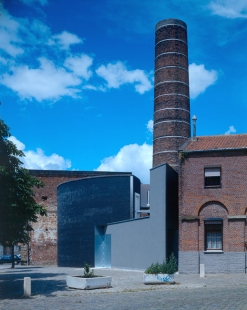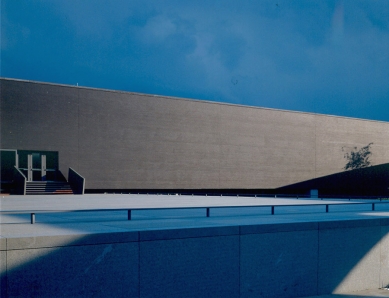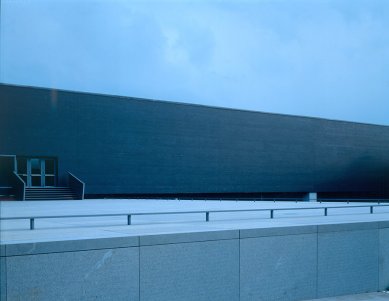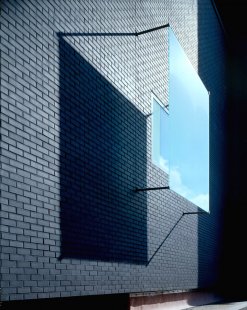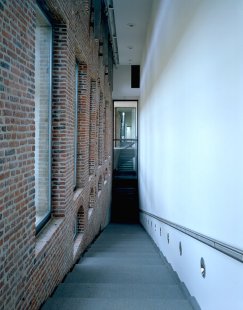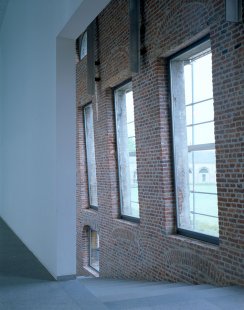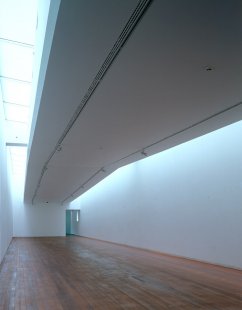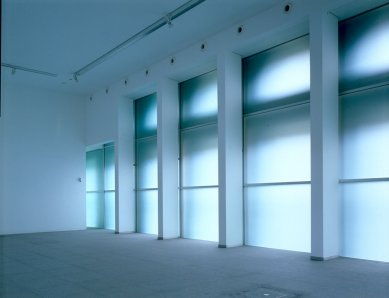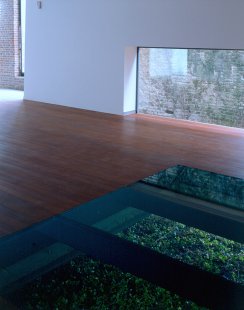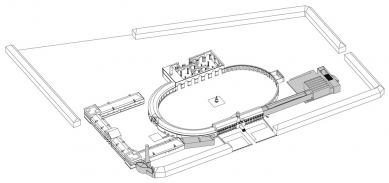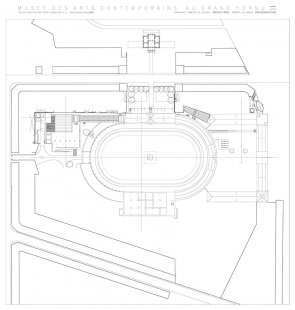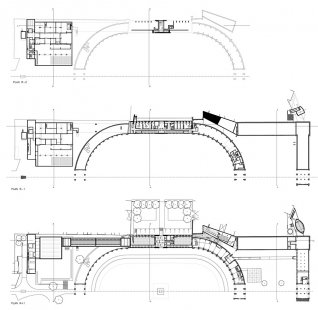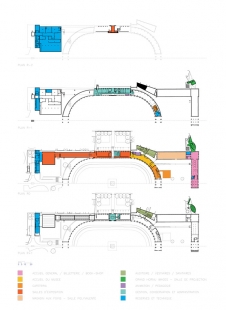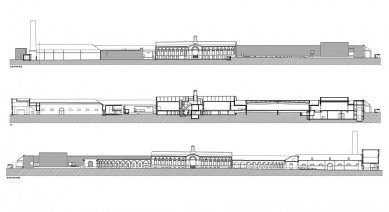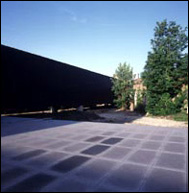 |
Grand-Hornu is a complex in the French-speaking part of Belgium, where coal was once mined. ... In the reconstruction of the site, traditional prudence was applied, and new interventions are lost in the existing building, remaining "discreet" and not disrupting the quiet forms, which have become its own cemetery. Hebbelinck refused to be crudely expressionistic. With an inventive and sensitive language, he breathed new life into the place and infused it with a strong architectural expression. His quest for precise and bold details is reflected in the inclined walls supported by metal structures resembling the hands of a young person lifting old and rickety parts. The architect's gestures are unequivocal, precise, and leave very little room for construction mistakes. Every inaccuracy and deficiency is immediately apparent and speaks to the old. The effect of this project lies in its bold expression, strong gestures, and subtle balance. ... Hebbelinck gently undermines the authority of the neoclassical buildings of the 19th century and their neatly planned and calming symmetry, an authoritarian scenery created to represent the working class while simultaneously controlling them. The building emphasizes a new order of spatial arrangement and new patterns of behavior. Moving through the newly expanded building, a variable distance from the existing parts is maintained. ... The complex is no longer a place for monumentality or authoritarianism. Architecture should not evoke awe or fear. Rooms and outdoor spaces are explored with curiosity and a constant sense of discovery. The relationship between the new and the existing unfolds here like the unfolding of a story or the revelation of nuances in a language that refines every part of the place. The original sites and new architecture are interwoven, sometimes revealed through excessive openings, drawing closer and pulling away like in a conversation between two people sharing their past and future lives. Every movement is accompanied by fresh light, new possibilities, strategies of the possible, created by the gradual rhythm of spaces. It expands participation in diversity and questions. It is hesitantly prepared and waits to be redefined. Such is the design of an institution trying to create culture and regenerate the meaning of things.
Maurizio Cohen: Confronto col passato, Domus 853, 2002
The English translation is powered by AI tool. Switch to Czech to view the original text source.






